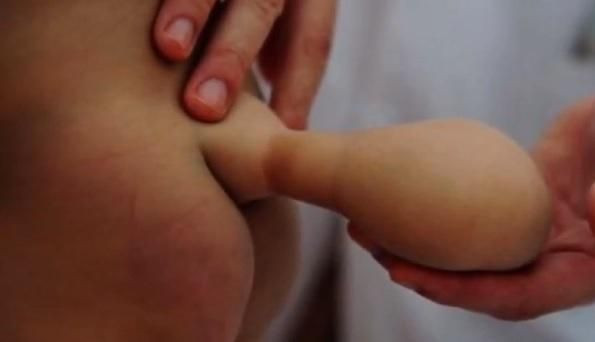Chinese Baby Born With 5-Inch Tail: How Common Is Spina Bifida?

Doctors in Changsha, China, fear there is nothing they can do for a mother and her 5-month-old child, who began to grow a tail after he was born with spina bifida. Nuo Nuo’s mother has pleaded with surgeons to remove the 5-inch tail, but they fear severing the growth that is connected to his nervous system may cause permanent damage, the UK's Metro reported.
The mother says she started to notice the growth protruding from the end of his tailbone a couple of days after he was born. Over time, the “tail” grew in length until it was eventually measured at 5 inches. Her doctors say the growth started within the first month of the child’s development in the womb. The exact cause for this condition is unknown, but experts speculate it is due to a combination of genetic and environmental factors.
According to the Spina Bifida Association, spina bifida is the most common disabling birth defect than can have a permanent effect on babies in the United States. Approximately eight babies born in the U.S. each day are affected by spina bifida or a related birth defect of the brain and spine. This congenital condition begins in the womb when a developing fetus’ spinal column does not close up the way it should. There are two types of the condition that result in a visible growth or “tail” that bulges from the end of the infant’s spinal cord.
Meningocele causes part of the spinal cord to come through the spine in the form of a sac filled with nerve fluid. Although there is generally no nerve damage, infants born with this particular form of Spina Bifida may be hindered by minor disabilities. Myelomeningocele, also known as spina bifida cystica, is the most severe type of spina bifida that occurs when parts of the spinal cord and nerves jut out from an opening in the spine. Between 70 and 90 percent of infants born with this condition have too much fluid in their brains, which, left untreated, can result in brain damage.



























